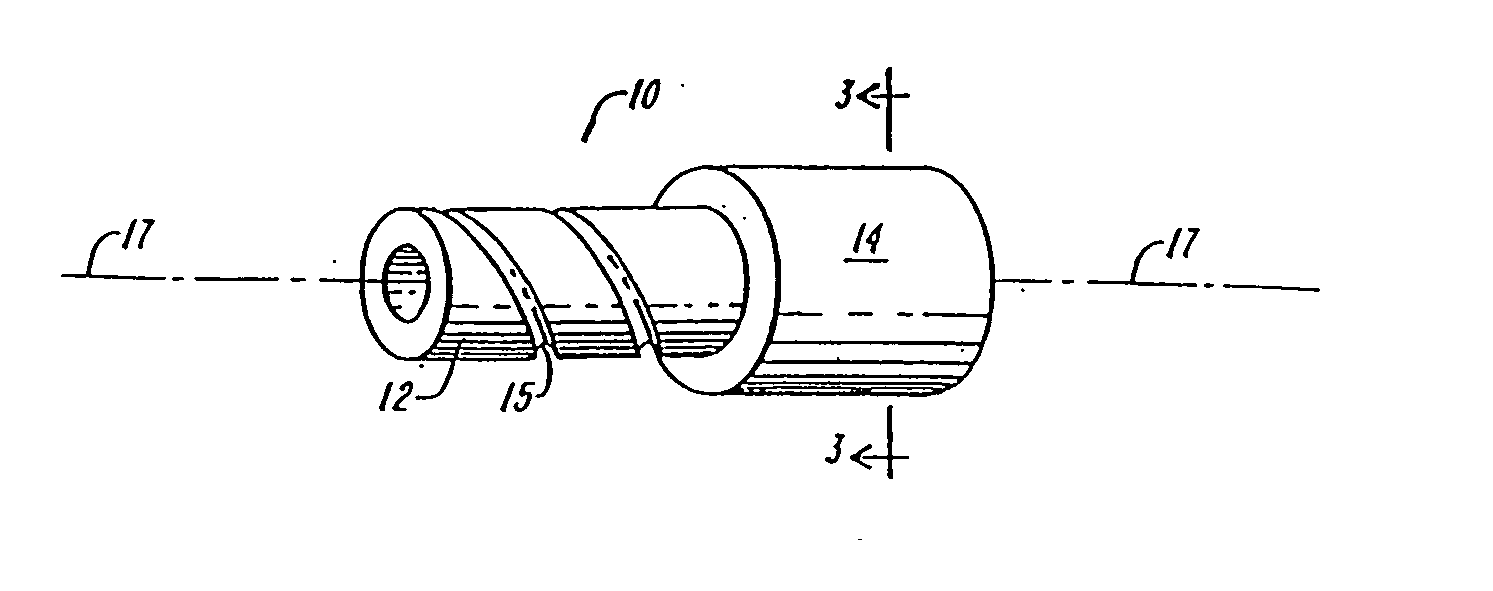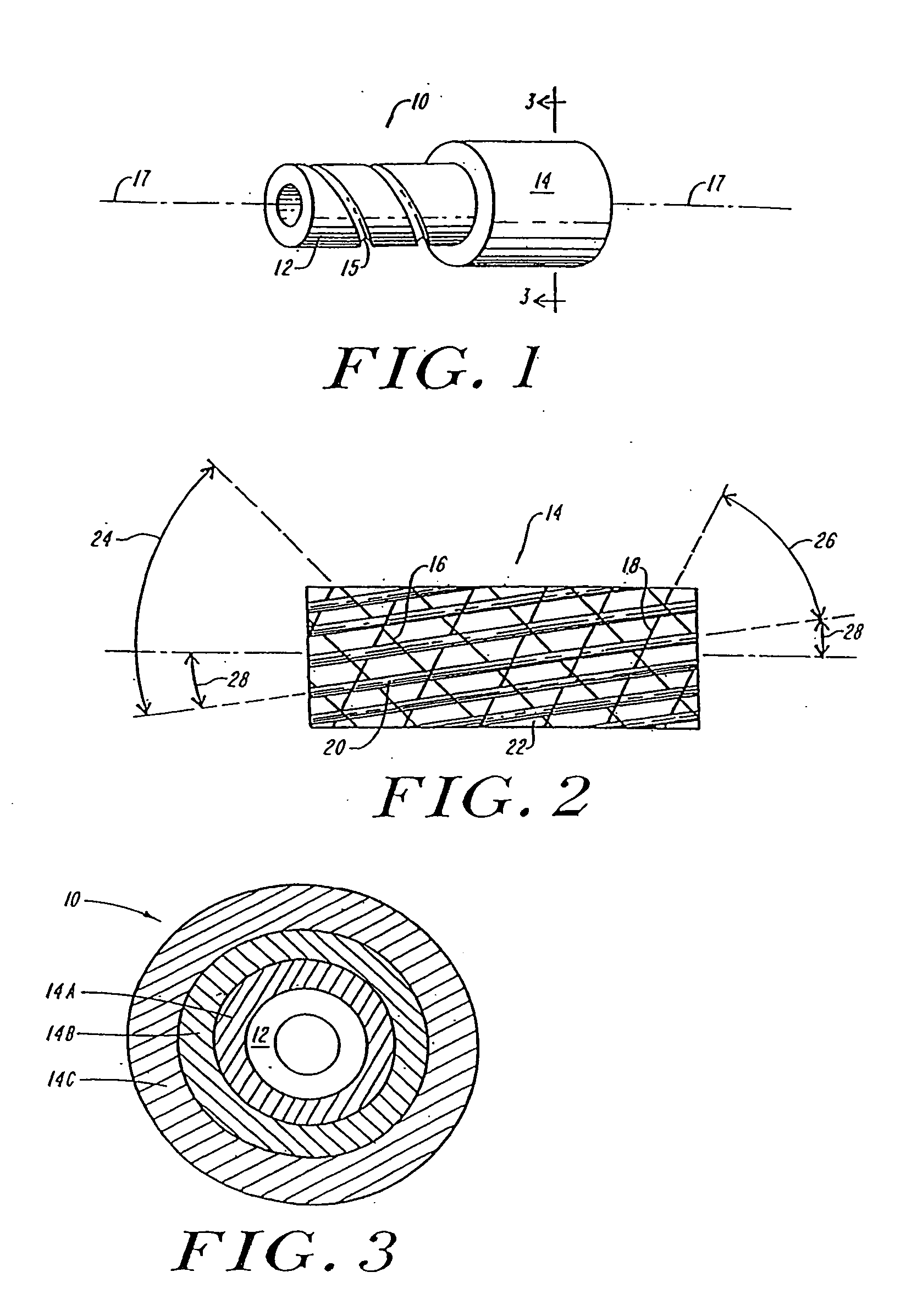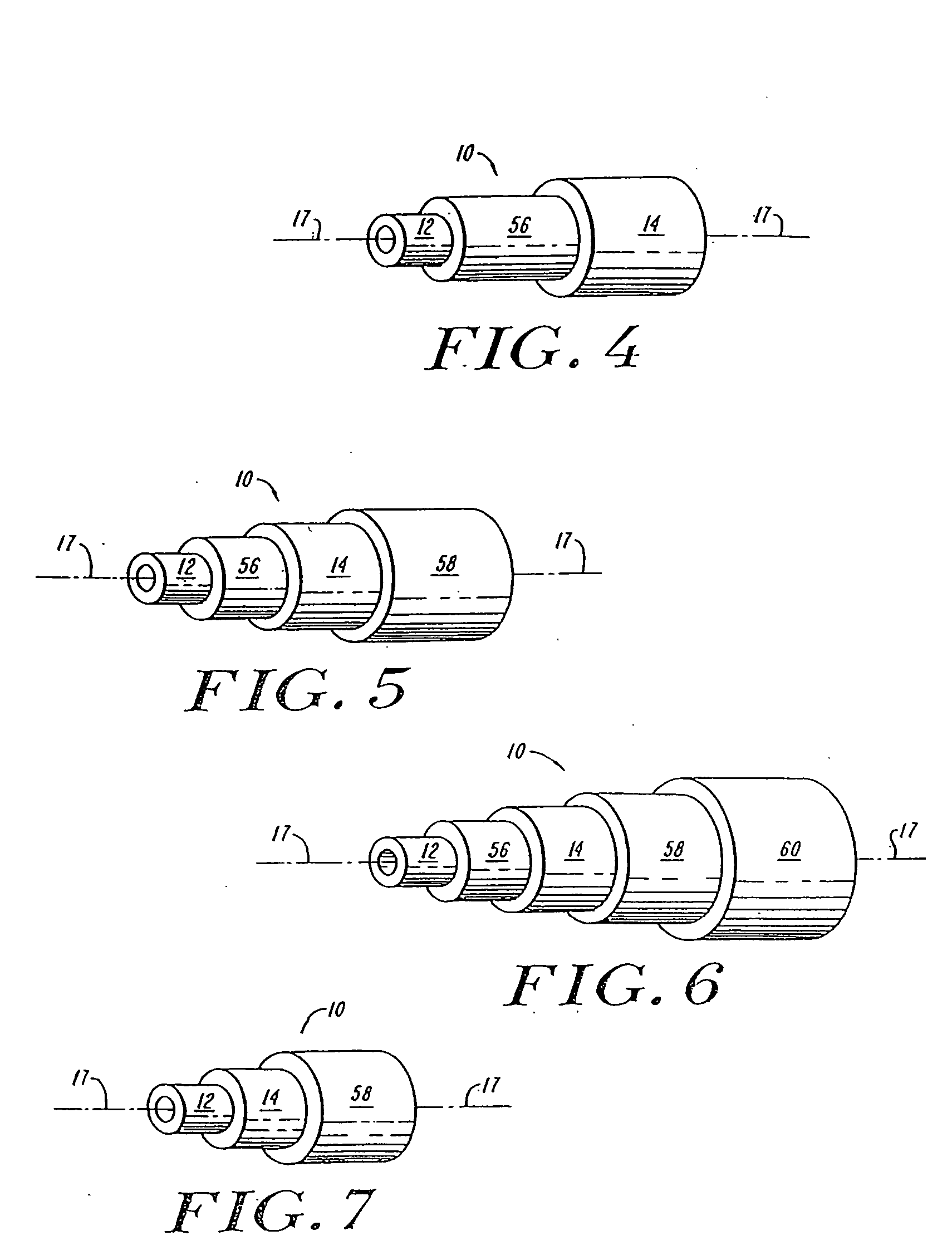Composite spoolable tube
a spoolable tube and composite technology, applied in the field of spoolable tubes, can solve the problems of high economic cost, high risk to personnel, and fracture of steel coiled tubes, and achieve the effects of reducing the strain on the energy conductor, and easy damag
- Summary
- Abstract
- Description
- Claims
- Application Information
AI Technical Summary
Benefits of technology
Problems solved by technology
Method used
Image
Examples
Embodiment Construction
[0051] Composite fibers (graphite, Kevlar, fiberglass, boron, etc.) have numerous assets including high strength, high stiffness, light-weight, etc., however, the stress strain response of composite fibers is linear to failure and therefore non ductile. Composite coiled tubing must therefore address the strain limitations in another manner, i.e., by providing a construction to meet the requirements with a near elastic response or with large deformations of the matrix. Such a composite arrangement must have high resistance to bending stresses and internal pressure and external pressure. It must also have high axial stiffness, high tensile and compressive strength and be resistant to shear stress. All of these properties are combined in the composite tubular member of the invention to provide a coiled tubing which can be bent to a radius compatible with winding onto a reasonable size spool.
[0052] P. K. Mallick in the text book entitled Fiber-Reinforced Composites, Materials, manufact...
PUM
 Login to View More
Login to View More Abstract
Description
Claims
Application Information
 Login to View More
Login to View More - R&D
- Intellectual Property
- Life Sciences
- Materials
- Tech Scout
- Unparalleled Data Quality
- Higher Quality Content
- 60% Fewer Hallucinations
Browse by: Latest US Patents, China's latest patents, Technical Efficacy Thesaurus, Application Domain, Technology Topic, Popular Technical Reports.
© 2025 PatSnap. All rights reserved.Legal|Privacy policy|Modern Slavery Act Transparency Statement|Sitemap|About US| Contact US: help@patsnap.com



